Assessing the ‘health literacy environment’ of health and health care institutions is a key step in identifying and understanding facilitating factors and barriers to health information, care, and services. Below are resources that will assist you.
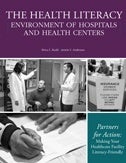
HLE 2
In support of a growing interest in the health literacy environment of our organizations, we have undertaken an update of the Rudd and Anderson 2007 The Health Literacy Environment of Hospitals and Health Centers [HLE]. This revised tool [HLE2] enables you to identify and rate literacy related factors within your organization. Findings will support efforts to improve health literacy by initiating action, identifying and acting on priority areas, and measuring change over time.
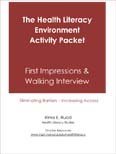
The Health Literacy Environment Activity Packet: First Impressions and A Walking Interview
The Health Literacy Environment Activity Packet: First Impressions and A Walking Interview. by R. Rudd, (2010). This packet focuses on four activities designed to help staff members consider the health literacy environment of their workplace. First impressions focus on the phone, the web and the walk to the facility. The walking interview is a navigation exercise. A Spanish-language version of this packet is also available and can be accessed through this link.

The Health Literacy Environment of Hospitals and Health Centers – Partners for Action: Making Your Healthcare Facility Literacy-Friendly
by R. Rudd, J. Anderson, (2006). This guide and the review tools found within it offer an approach for analyzing literacy-related barriers to healthcare access and navigation. We designed this guide to assist chief executive officers, presidents, program directors, administrators, and healthcare workers at hospitals or health centers to consider the health literacy environment of their facilities and to analyze ways to better serve their patients.
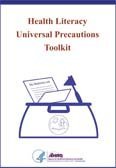
AHRQ Health Literacy Universal Precautions Toolkit
by D. DeWalt, L. Callahan, V. Hawk, K. Broucksou, A. Hink, R. Rudd, C; (2010). This toolkit provides step-by-step guidance for examining health literacy in clinical practice settings. It provides tools for assessing practice and improving interactions with patients at all literacy levels.
As the resources below illustrate, the importance of the institutional environment in hindering or promoting health literacy has been highlighted by many organizations.
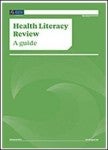
Health Litehealth literacy review a guideracy Review: A Guide, New Zealand Ministry of Health, 2015
The Ministry of Health developed this document, which was informed by best practice examples from around the world, with the goal of supporting health organizations as they work to reduce the health literacy demands placed on consumers.
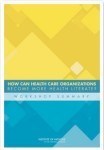
How Can Health Care Organizations Become More Health Literate? – Workshop Summary
L. Hernandez. IOM Roundtable on Health Literacy, 2012. This report summarizes a 2011 workshop held by the IOM Roundtable on Health Literacy to discuss the growing recognition that health literacy depends not only on individuals’ skills but also on attributes of the health care system.
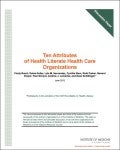
Ten Attributes of Health Literate Health Care Oranizations
by C. Brach et al. IOM Roundtable on Health Literacy, 2012. This discussion paper, written by participants in the IOM Roundtable on Health Literacy, presents ten attributes thought to characterize health care organizations that make it easier for people to navigate, understand, and use health information and services. By identifying these attributes and providing implementation strategies to work towards achieving each of them, the paper seeks to provide health care organizations with a set of actions they could take to become more health literate. This is inspiring adaptations and original work in many other countries.
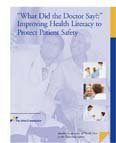
What did the Doctor Say?: Improving Health Literacy to Protect Patient Safety
Joint Commission on Accreditation of Healthcare Organizations 2007. This report is part of the series “Healthcare at the Crossroads,” published by the Joint Commission on Accreditation of Healthcare Organizations. The Joint Commission convened an expert Roundtable panel that was comprised of a broad range of stakeholders who are accountable for addressing health literacy. This report represents the culmination of that Roundtable’s discussion and provides recommendations to improve health literacy, reduce communication-related errors and better support the interests of patients and providers of care alike.
Learn More
-
Assessing the Health Literacy Attributes of an Academic Medical Center
- Horowitz A, Maybury C, Kleinman D, Radice S, Wang M, Child W, Rudd R. (2014). Health Literacy Environmental Scans of Community-Based Dental Clinics in Maryland. American Journal of Public Health, 104(8): e85-e93.
- Groene O, Rudd RE. (2011). Results of a feasibility study to assess the health literacy environment: Navigation, written and oral communication in ten hospitals in Catalonia, Spain. Journal of Communication in Healthcare, 4: 227-237.
- Rudd R. (2005). Navigating Hospitals: Literacy Barriers. Literacy Harvest, 11(1): 19-24.
- Rudd R, Renzulli D, Pereira A, Daltroy L. (2005). Literacy Demands in Health Care Settings: The Patient Perspective. Understanding Health Literacy: Implications for Medicine and Public Health.



